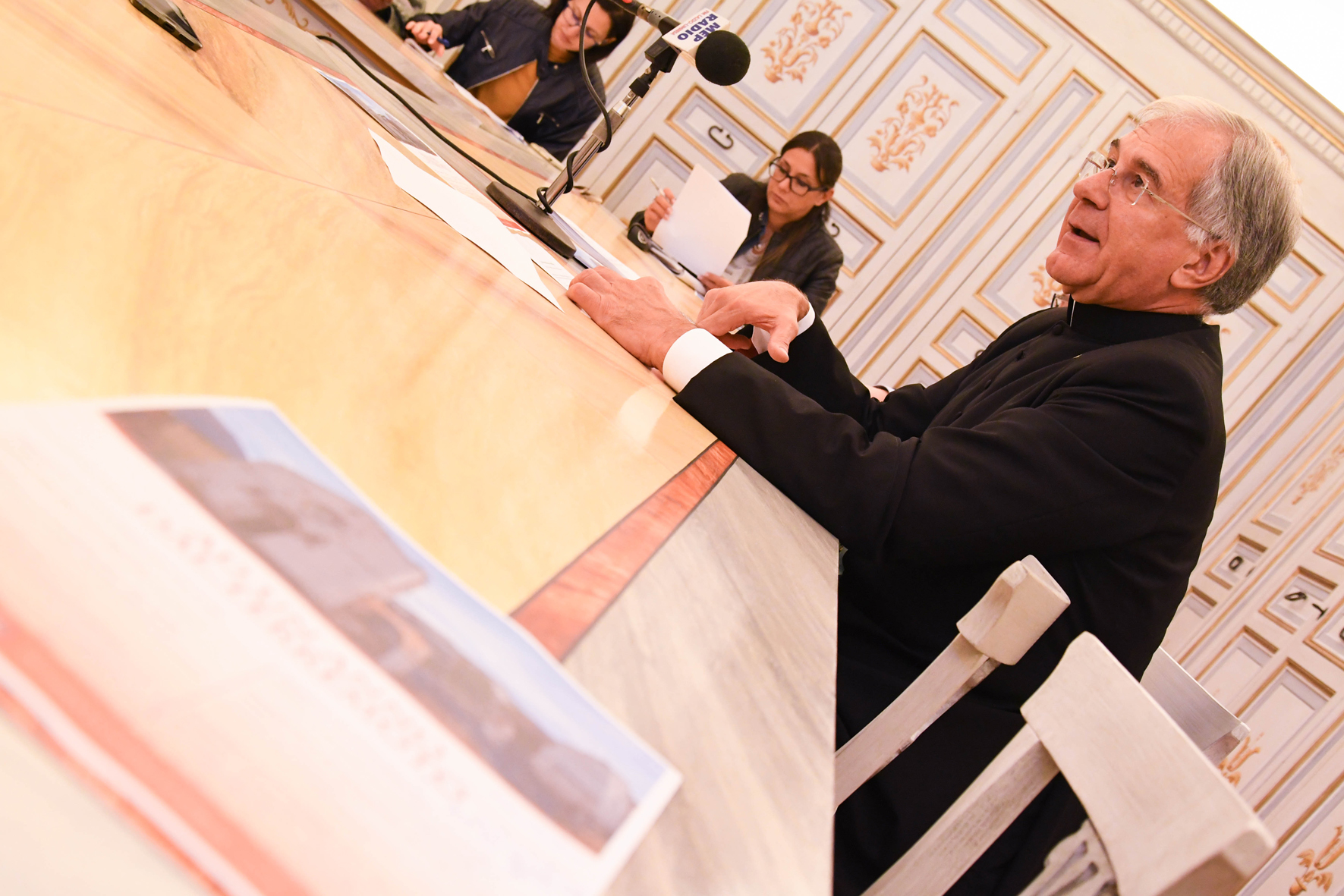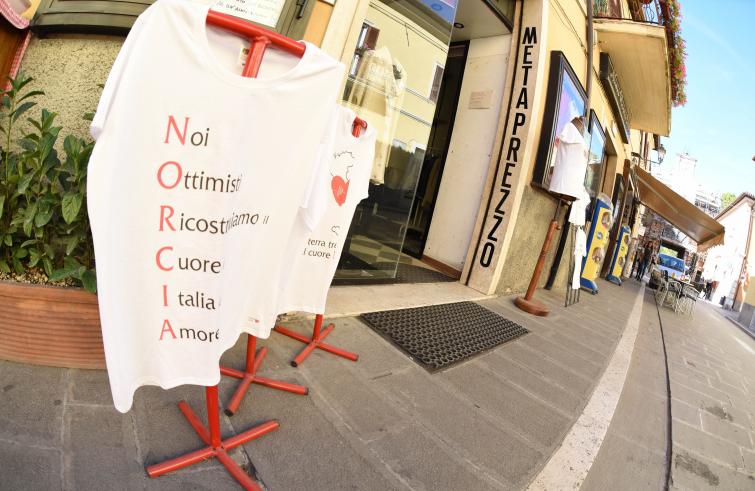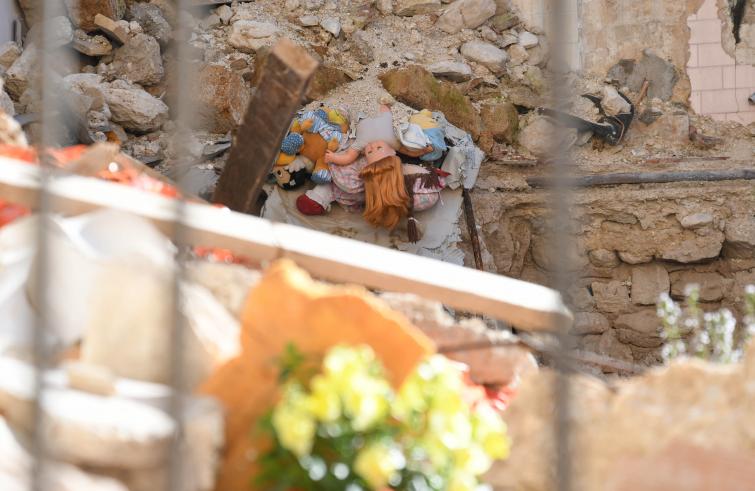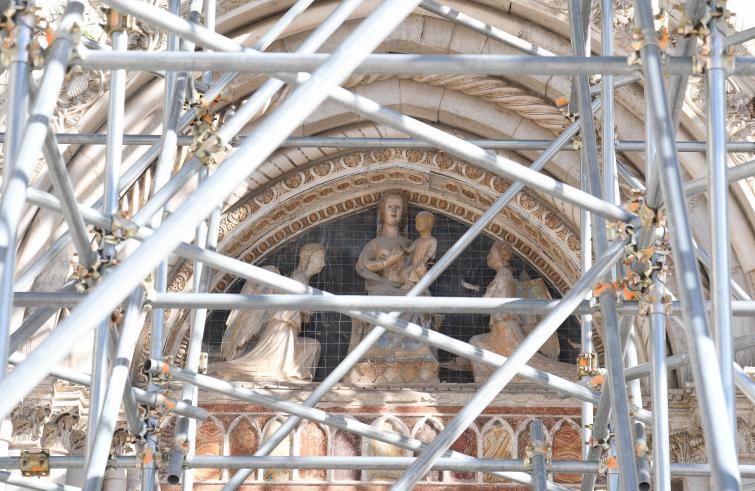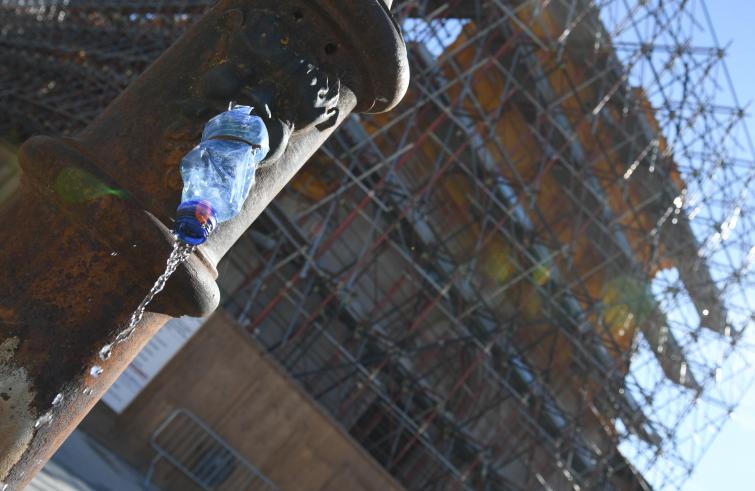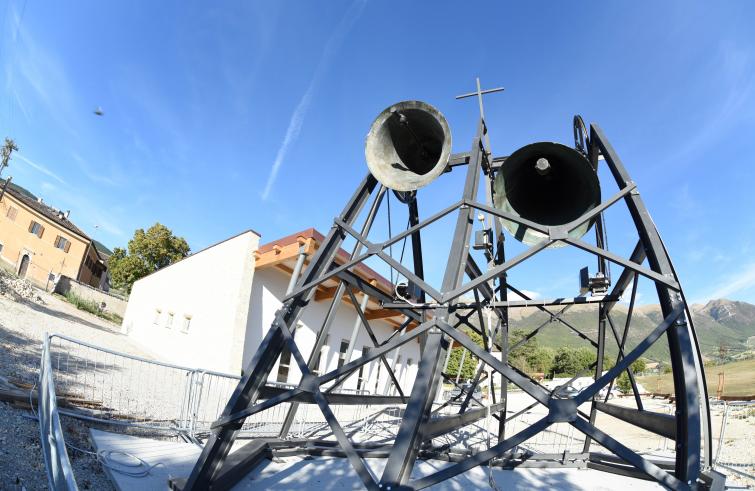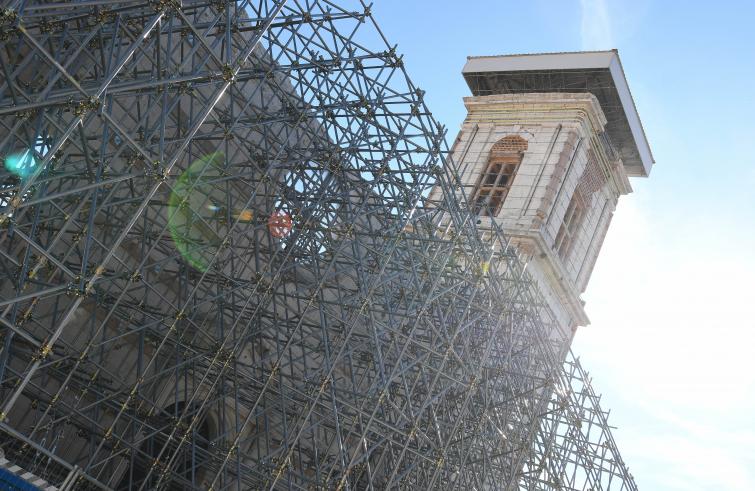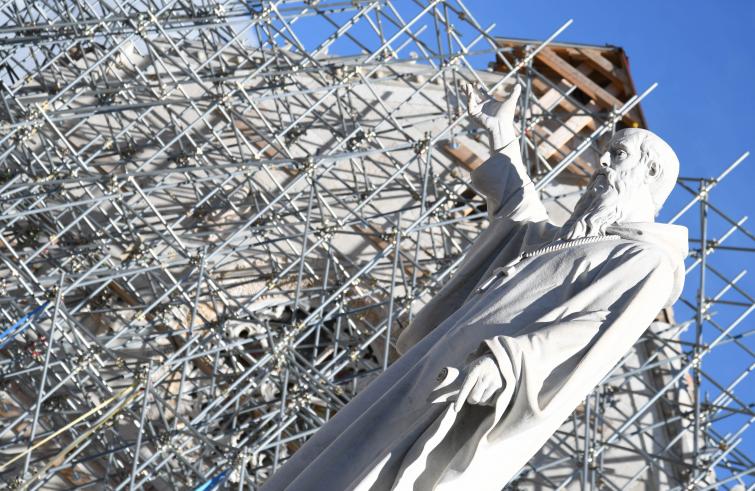
Mons. Boccardo, on September 25th you held a ceremony marking the earthquake of September 26 1997 with the bishops of Umbria, to the presence of public authorities and local population. After 20 years this wound seemed to have been healed, but it was reopened with the seism of August 24 and of October 26 and 30th 2016. What does this new anniversary mean for the people of Norcia and of these lands?
It means reliving an event. The wounds of the 1997 earthquake had almost been healed, but they were reopened with the seism of August 30th and of October 2016. They represent
A dramatic challenge for these people, who have the capability of making a new start every time,
of mending the broken pieces to restart with trust and determination.
What are your memories of those tragic days of October 2016?
I was at home during the earthquake of October 30th. It was the strongest seism, that caused the greatest amount of damage. I immediately ran outside to reach Norcia and the other villages that had been hit by the earthquake. I remember seeing disoriented people who couldn’t return to their homes. Feelings of fear, frustration, uncertainty were visible on their faces, and most of all they expressed a question: ‘what now’? The presence of many volunteers, of the Church, with the diocesan Caritas and parishes, all actively present, was a small sign of comfort and an encouragement to face the emergency finding concrete answers to immediate needs.
What impressed you the most in the reactions of your community and of your people?
Their tenaciousness, their faith and their ability to share.
These people, who have unfortunately grown used to cope with these tragic events, never lost the desire to start anew. Their tenaciousness: it was beautiful to see that since the very first weeks after the seism some small family businesses were already reopening their activities – albeit temporarily and inside a tent. Faith: when the volunteers, local administration staff and firefighters managed to recover objects of worship under the rubble, such as statues and crucifixes, I saw people break out in tears, for those objects had been a part of their lives, of their families. I saw tokens of sharing and solidarity: having to live for months under the same tent helps overcome misunderstandings and communication problems that can occur especially in small villages.
The earthquake acted like a school of peaceful coexistence, for in times of ordeal we are capable of overcoming resentment and jointly proceed along the same path that is for the good of everyone.
A year after the earthquake, is the emergency-stage over? What do you think of the reconstruction efforts carried out so far? Risks of criminal infiltration could jeopardize everything…
The initial emergency-stage is over, while the reconstruction emergency will be over only when everyone will have returned to their home. A lot has been done over the past year thanks to the commitment of various Institutions and thanks to volunteer workers. Many people were given wooden dwellings and residential modules, and could thus return to the areas where they used to live. Something has been done in terms of the safeguarding of public buildings, monuments and places of worship, but the same cannot be said for the reconstruction. It would be necessary to hasten the pace of these interventions to give a positive sign to the local populations.
- foto SIR/Marco Calvarese
- foto SIR/Marco Calvarese
- foto SIR/Marco Calvarese
And what about the risk of criminal infiltration?
This risk was addressed since the beginning of the earthquake. Everything must be done in transparency and in compliance with the law.
It’s a time of emergency and thus we should be able to overcome all the bureaucratic procedures that are not indispensable, while ensuring the legality and transparency of interventions.
Emergency means giving an answer to people’s needs.
The seism equally affected churches and works of art. What is the current state of restoration works?
The fact that there were no victims to mourn is a great grace. Near the epicenter of the earthquake there are over 200 damaged churches, some of which have collapsed completely and others that are seriously damaged and cannot be accessed. The project we developed with the Cultural Heritage Office of the Italian Bishops’ Conference envisages providing at least one church to every affected community. We are concentrating our efforts in Norcia and Cascia, where thanks to Caritas Italy we set up the first two community centres. Others are being planned in three municipalities. It will then be necessary to proceed with the reconstruction or restoration of the damaged places of worship. The Extraordinary Commissioner issued two ordinances for reconstruction that provide for the safety enhancement of several churches in the area.
We are looking forward to the next steps leading to veritable reconstruction.
What has the closeness of Pope Francis and of the Italian Church meant for the affected populations?
Pope Francis’ visit to San Pellegrino of Norcia on October 4 2016 and the audience with the victims of the earthquake in January 2017 were two eloquent gestures of solidarity and closeness that were deeply appreciated by our people.
Every time I have the opportunity of meeting the Pope his first question is: “how are your people?” he then wants to know about the reconstruction, of the dwellings. The Holy Father has given us constant tokens of closeness that are not confined to the visit of his Almoner who came here to purchase typical products to support the local economy. These are gestures of great consolation for the local population.
Also the Italian Church conveyed immediate closeness with material aids and spiritual support. Thanks to its presidents, first Cardinal Bagnasco and now Cardinal Bassetti, and to the many bishops who in different ways have shown their solidarity, we have never felt alone. Now we have to face the challenge of ensuring that people will not only be given a home but that they will also recover their social and human environment so as to resume a normal life. This is the commitment that lies ahead according to everyone’s specific assignments and responsibilities.
- foto SIR/Marco Calvarese
- foto SIR/Marco Calvarese
- foto SIR/Marco Calvarese
When will Pope Francis visit Norcia?
We would be very happy to welcome him, even tomorrow morning. I am not aware of this project yet. I deeply hope that even if he shouldn’t come earlier, that he may at least be present for the reopening of the Basilica of Saint Benedict.
The Basilica of Saint Benedict, Patron Saint of Europe, was destroyed by the earthquake. It is an icon of the seism of October 2016. European Institutions have given the green light to its reconstruction. What would be the meaning of this commitment if it were to be implemented?
The EU’s commitment for the reconstruction of the Basilica is a significant gesture. We all know the role played by Benedict of Norcia and by his monks in the erection of the European Continent, not only on the religious or spiritual plane but also at cultural, human and social level. The fact that Europe, with its institutions, assumes the material commitment of rebuilding the Basilica of Saint Benedict, leads me view it as
An implicit recognition of the irreplaceable role of Saint Benedict and of Christianity in the foundation of our Continent.
Such contribution is not formally recognized in the European Constitution. Rebuilding the basilica of St. Benedict is a sign that the Saint of Norcia has something to tell us also today, to our contemporary societies that appears to want to put aside the Benedectine message. I hope that rebuilding the basilica will help Europe rediscover the Gospel’s contribution to European conscience.
- foto SIR/Marco Calvarese
- foto SIR/Marco Calvarese
- foto SIR/Marco Calvarese
Past May 24, at the feast of Saint Eutizio, you called upon the faithful “to read between the lines of the earthquake that wounded our lands and to draw lessons from it.” A year later, what are these lessons?
An earthquake is not just a story in the news, it’s also a question of conscience. We ought to read between the lines of this event. The first lesson is
Man is not the owner of his life or of his time.
In just a few seconds an earthquake has the power of destroying everything we had built with great efforts. The second message is solidarity. It’s a sad thing to see that it takes an earthquake to discover all of this. But in fact at a time of ordeals the most beautiful aspects of the human heart come to the fore.
May solidarity become a way of life.
The third lesson is to open our horizons. We worry about our small worlds, about our daily life. The earthquake makes us realize that in the world there are people who suffer like we do as result of natural disasters. Even when we are faced with painful experiences we must not be self-absorbed in our own difficulties, we must keep open the doors of our minds and of our hearts. We are not alone in this universe.

